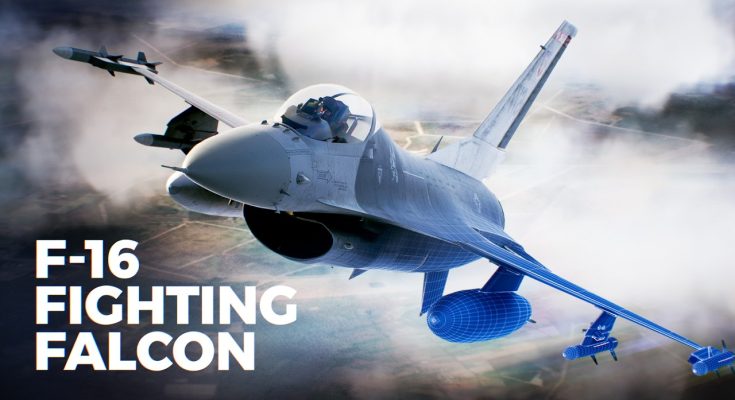The F-16 Fighting Falcon, a versatile and highly capable multirole fighter aircraft, is one of the most successful and widely used military jets in the world. Developed by General Dynamics (now Lockheed Martin) in the late 1970s, the F-16 has earned its reputation as a high-performance, cost-effective solution for air forces across the globe. Its “insane” engineering lies in the careful combination of innovative design, advanced technology, and unmatched agility, all packed into a small, lightweight, and highly maneuverable platform.
At the core of the F-16’s remarkable engineering is its unique design and aerodynamics. Unlike traditional fighter jets that have large, fixed wings, the F-16 features a relatively small delta wing with a cropped leading edge. This design significantly reduces the jet’s drag, improving its speed and overall efficiency. The wing shape and structure also provide exceptional lift, enhancing maneuverability and agility. The F-16 can maintain high speeds while performing aggressive maneuvers, including tight turns, rolls, and loops. This “dogfighting” capability makes it a highly effective adversary in air-to-air combat scenarios.
One of the most innovative aspects of the F-16’s design is its fly-by-wire (FBW) control system, which replaced traditional mechanical flight controls with electronic ones. This system allows for precise control over the aircraft’s movements, even at high speeds or under extreme stress. The FBW system also provides built-in stability and automatic correction of unwanted movements, which helps the pilot maintain control, especially during intense aerial maneuvers or combat situations. The result is a fighter jet that is both incredibly responsive and forgiving, even for less experienced pilots.
The F-16’s advanced avionics and radar systems further enhance its capabilities. The aircraft is equipped with a sophisticated radar, capable of tracking multiple targets simultaneously while distinguishing between enemy and friendly forces. This allows the F-16 to effectively engage in both air-to-air and air-to-ground combat, while providing valuable situational awareness to the pilot. The plane also features modern targeting systems and electronic warfare equipment, enabling it to conduct precision strikes in a wide range of environments.
Another impressive feat of engineering in the F-16 is its cockpit design—the pilot sits in a reclined position to reduce the effects of G-forces during high-speed maneuvers. The cockpit is designed for maximum visibility and efficiency, with all essential instruments within easy reach, ensuring the pilot can make quick decisions under pressure. The layout allows for clear communication with ground control and other aircraft, making the F-16 a highly effective tool in coordinated military operations.
One of the F-16’s most impressive features is its versatility. It was originally designed as a lightweight, cost-effective fighter for air superiority, but its multirole capability allows it to perform a wide range of tasks. Whether conducting air-to-ground strikes, close air support, reconnaissance missions, or providing air superiority, the F-16 excels in nearly every combat environment. Its ability to carry a wide range of weapons, from precision-guided bombs to air-to-air missiles, ensures that it can adapt to various mission requirements. Moreover, the F-16’s modular design allows for relatively easy upgrades, ensuring that the aircraft stays relevant even as technology advances.
The aircraft’s fuel efficiency and range also contribute to its engineering brilliance. Despite being a powerful fighter jet, the F-16 is designed to be highly efficient, allowing it to stay airborne for extended periods without compromising on its performance. This is particularly important for long-range missions or operating in areas with limited refueling capabilities.
Lastly, the F-16’s affordability is a key component of its success. While its engineering capabilities rival those of more expensive fighter jets, its production cost is significantly lower, making it an attractive option for both large and smaller air forces. This has led to over 4,600 F-16s being produced, and the jet is used by more than 25 countries worldwide.
In conclusion, the F-16 Fighting Falcon’s “insane” engineering results from its combination of cutting-edge aerodynamics, advanced avionics, fly-by-wire technology, and unparalleled versatility. The aircraft’s agility, reliability, and adaptability make it a force to be reckoned with in any combat scenario. From its ability to perform complex maneuvers to its multirole capabilities, the F-16 remains one of the most successful and revered fighter jets in history, and its engineering continues to influence the design of modern military aircraft.



